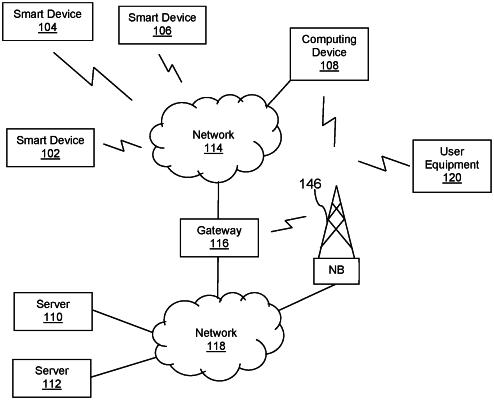| CPC H04L 12/2816 (2013.01) [G05B 19/042 (2013.01); G06F 16/90335 (2019.01); G06N 5/02 (2013.01); H04L 12/2809 (2013.01); H04L 12/281 (2013.01); H04L 67/53 (2022.05); G05B 2219/2642 (2013.01)] | 18 Claims |

|
1. A method implemented by a computing device in a network, comprising:
searching a local area network for smart home devices to determine an identifier associated with a smart home device;
searching a database for instructions related to the smart home device based on the determined identifier of the smart home device, wherein the database comprises a hyperledger that includes microcode instructions related to the smart home device;
generating a smart contract between the computing device and the smart home device based at least partially on the instructions related to the smart home device, wherein the smart contract defines rules by which the computing device controls communications of the smart home device including allowed actions and disallowed actions of the smart home device;
writing the identifier associated with the smart home device to a second database, wherein the second database is a second hyperledger;
generating a digital twin of the smart home device; and
automatically arbitrating communication of the smart home device based on the smart contract.
|